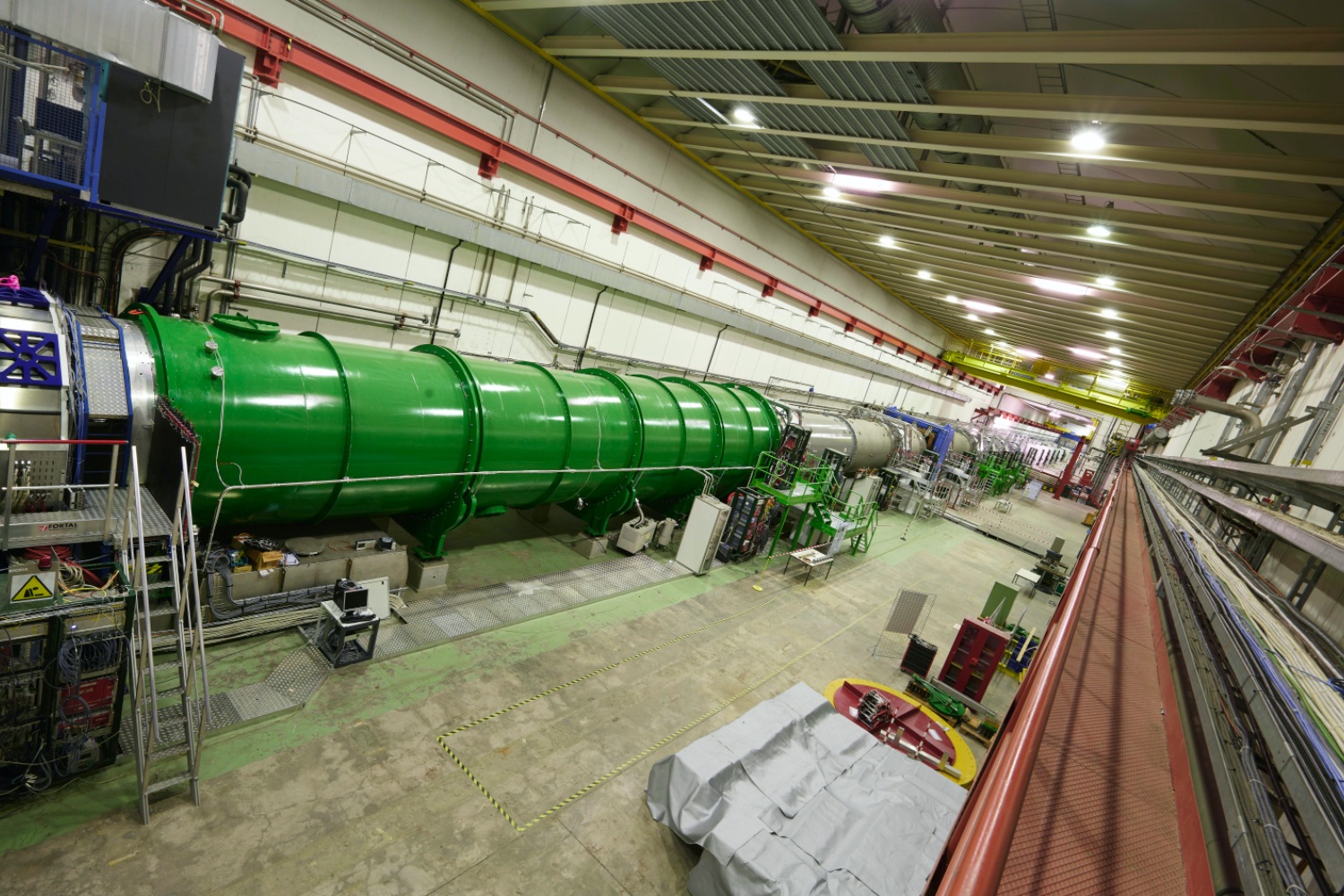UofG physicists play key role in CERN’s first observation of ultra-rare particle decay
Published: 26 September 2024
Researchers from the University of Glasgow have played a vital role in the very first observation of an ultra-rare particle decay process.
Researchers from the University of Glasgow have played a vital role in the very first observation of an ultra-rare particle decay process.
The finding - the first experimental observation of the ultra-rare decay of the charged kaon into a charged pion and a neutrino-antineutrino pair - will open a new path to find physics beyond the Standard Model of particle physics.
The observation was announced by CERN’s international NA62 collaboration on September 24 2024. The NA62 collaboration had a significant UK contribution, with researchers from Glasgow working alongside colleagues from the universities of Birmingham, Bristol, and Lancaster.

The observed decay had a significance of 5 sigma (the criterion used in particle physics to declare a discovery), measuring the decay rate to a 25% relative precision.
This makes the decay the rarest decay ever established experimentally at the 5 sigma level. The Standard Model of particle physics predicts that less than one in 10 billion kaons will decay in this way.
Professor David Britton, team leader of the Glasgow NA62 group and Project Leader of the GridPP Project that delivers key computing infrastructure support for the project, said: “This amazing achievement of observing such an extraordinarily rare decay has relied critically on the long-term support of the GridPP computing infrastructure in the UK by STFC.
“That infrastructure, led by researchers at the University of Glasgow, has enabled the generation of the billions of simulated events over the last decade that were used to understand the detector, the backgrounds, and the expected signature in the data. This work enabled and under-pins the physics result announced today.”
The new result is based on the combination of data taken by the NA62 experiment in 2021 and 2022 and a previously published result based on the 2016 to 2018 dataset.
The 2021 and 2022 dataset was collected following a suite of upgrades to the NA62 setup, allowing operation at 30% higher beam intensity with several new and improved detectors.
The hardware upgrades combined with refined analysis techniques allowed collection of signal candidates at a 50% higher rate than before, while adding new tools to suppress backgrounds.
This measurement of the rarest decay established at discovery level (the famous 5 sigma) has come about thanks to the result of excellent teamwork including many UK colleagues alongside other collaborators in CERN.
The NA62 experiment has been designed and constructed specifically to measure the ultra-rare kaon decay. Kaons are produced by a high-intensity proton beam provided by the CERN Super Proton Synchrotron (SPS), colliding with a stationary target.
This creates a beam of secondary particles with almost a billion particles per second flying into the NA62 detector, about 6% of which are charged kaons.
The detector identifies and measures precisely each kaon and its decay products, except neutrinos that show up as missing energy.
Professor Giuseppe Ruggiero at the University of Florence and the current NA62 spokesperson said: “This is the culmination of a decade of work.
“After rigorous and painstaking work we have got a stunning reward to our effort and delivered a long-awaited result.”
Why are physicists looking for processes so rare that they barely occur? Indeed, this is the key point of studying the decay.
Thanks to the extreme suppression, and the fact that is very precisely predicted theoretically, the decay rate is very sensitive to new physics beyond the SM description. This makes the decay a ‘golden mode’, one of the most interesting processes to search for evidence of new physics.
The measured branching ration of the decay is consistent with the SM expectation but is about 50% larger. One reason for this could be the presence of new particles that enhance the probability of the process, but more data is needed to test this hypothesis.
With the data-taking ongoing, NA62 will be able to either confirm the existence of contributions to the decay from new physics, or place strong constraints on the size of any such possible contributions.
Professor Mark Thomson, particle physicist and Executive Chair of the UK’s Science and Technology Facilities Council (STFC), welcomed the results: “The NA62 experiment is another brilliant example of colleagues from the many nations coming together at CERN to explore the mysteries of the universe.”
This latest announcement provides an exciting example of how measuring ultra-rare processes can provide a window for searching for new physics beyond the Standard Model.
First published: 26 September 2024

